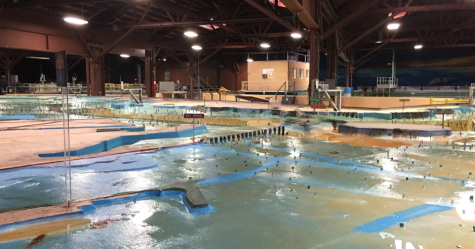Should We Fear the Robotic Workforce?
Slowly but surely, the rise of automation has started to replace the everyday jobs that everyday people should normally be working. From the small start-ups to the major corporations, any business can use robots. Robots have recently gained the ability to replace sales reps, bank tellers, pharmacists, sports reporters, farmers, astronauts, stockroom workers, dishwashers, construction workers, and a plethora of other jobs. Robots can be seen behind the counter at a bar or at the hospital performing minor surgeries. Even lawyers and soldiers are being substituted for their android counterpart. Imagine “trial by robot” or even robotic warfare. It would be straight out of a Spielberg movie.
Numerous advantages would be provided if robots came into play into the everyday workplace. They could accomplish many tasks that humans would have a hard time normally accomplishing.
Quality control and precision are two major abilities that robots are superior at. They are programmed to do the same thing over and over again without even taking a break. You can mainly see these types of robots in factories that can range from the highly technological advanced car manufacturers, to food company factories packaging processed foods. If manufacturers invest in this robotic technology, they can, in the long run, save millions of dollars. Robots don’t need health care benefits, vacations, or a hefty wage. They tend to be safer for the workers and the company. Instead of a person working dangerous machinery, an artificial worker would be put in place to do the hazardous tasks. The companies wouldn’t have to worry about unsafe workplace lawsuits from their employees anymore, and thus save even more money.
The physical build of a robot can also prove to be advantageous. Robots are made up of
chemically advanced metals and plastics like titanium or carbon fibers that are stronger than human bone and muscle combined. These materials can be manipulated to any shape, size, and structure. If a warehouse needs a robot to reach into towering racks of heavy crates, they can get a huge robot to do that. If a bomb squad needs a robot to pry around bomb-infested areas before they go in for the diffuse, they can build a small enough robot to do precisely that. The materials will stand the tests in even extreme environments, unlike some of their homeostatic counterparts. They would take on, without any question, the dangerous and unwanted jobs like intergalactic space travel, warfare, or a DMV employee.
Since these robots pose a much better workforce than human beings, why would we even bother having humans at jobs anymore? Maybe it is because robots have a hard time capturing a certain human essence in the workplace.
A publication done by Carl Benedikt Frey and Michael Osborne called “The Future of Employment: How susceptible are jobs to computerisation?” measured the employment impact of computerization. Frey and Osborne used the O*NET, an online service that was developed for the US Department of Labor, to find their results. It mainly helped them categorize the certain knowledge and ability that a job required. They then linked those skills, using various equations and data, to the employment impact of automation.
They split up their data into categories of perception and manipulation, creative intelligence, and social intelligence. Perception and manipulation consists of tasks like finger dexterity, manual dexterity, manipulation and assemblage of objects, and ability to work in tight or cramped workspaces. Creative intelligence consists of originality and fine arts, and social intelligence consists of how you understand others’ reactions, negotiation, persuasion, and personal assistance.
Frey and Osborne found that robots have a high probability of taking jobs like dishwashing, court clerks, or telemarketers, which require little to no perception, creativity, or social intelligence, but will have little to no chance in taking jobs that rely on any in-depth skills including perception, creativity, or social intelligence.
Jobs that require both perception and manipulation are jobs like surgeons or boilermakers. Robots are good at building and constructing objects with precision and consistency. Robots fall short, however, in combining skills in manipulation with skills in perception. Robots are still far way from giving someone triple bypass surgery. Humans are the only entities that can pull off a feat like this. There are too many variables that can happen that programs still have a hard time in recognizing. Robots also cannot yet weld metals the way boilermakers can. Even if the computers can find ways to make certain metal parts using various algorithms and patterns, boilermakers have a skill to make on the spot decisions to accomplish tasks that need immediate attention, something robots simply cannot do.
Creativity is obvious. Computers don’t have emotion, so therefore struggle in creating fine art or being original. Only artists can capture raw feeling and create it into art. Social intelligence was the final task that robots fail in. Jobs like event planners or public relations simply cannot have a computer take their place. We won’t take a negotiation done by a robot seriously. Social interaction is defined as human interaction between each other, not between robots, and jobs that require social intelligence are all based on social interactions.
We shouldn’t be worried if robots are better than humans at certain jobs, because they are simply not. It all boils down to human interaction and experience. Human emotion is far too complicated for programmers to transcribe into code to put into a metal apparatus. All we need recognize is when it is appropriate, or when it is not, to use the futuristic robotic machinery in the workplace instead of the traditional human workforce. But don’t be surprised the next time you see a robot behind the cash register at your local grocery.





